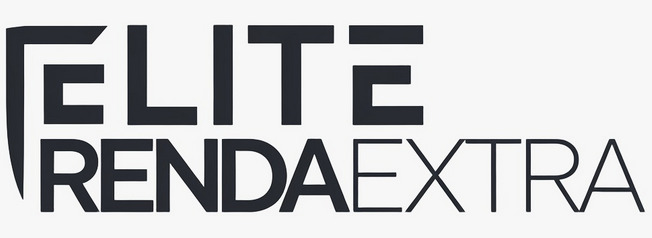Navigating the path to securing a loan in Canada can seem like a complex journey, filled with financial jargon and numerous requirements. Whether for a new home, a vehicle, consolidating debt, or starting a business, understanding the process beforehand is the most powerful tool you can have. It transforms a potentially stressful task into a manageable series of steps.
Being well-prepared not only demystifies the application process but also significantly strengthens your position in the eyes of potential lenders. It demonstrates financial responsibility and a clear understanding of your commitments. This preparation is about more than just filling out forms; it’s about building a comprehensive financial picture that tells a story of reliability and readiness.
Understanding Your Financial Position First
Before you even begin to look at lenders or loan products, the first and most critical step is to take a detailed look at your own financial health. Lenders in Canada base their decisions on a clear set of risk indicators, and knowing where you stand on these metrics is essential. This self-assessment allows you to identify any potential red flags and address them proactively.
Assessing Your Credit Score
Your credit score is a numerical representation of your creditworthiness and is one of the first things a lender will examine. In Canada, the two main credit bureaus are Equifax and TransUnion. Scores typically range from 300 to 900. While each lender has its own threshold, a score of 660 or higher is generally considered good and increases your chances of approval and of securing a favourable interest rate.
It’s wise to obtain a copy of your credit report from both bureaus before applying for a loan. Review it carefully for any errors or discrepancies that could be negatively impacting your score. Understanding the factors that influence your score—such as payment history, credit utilization, and length of credit history—provides valuable insight into your financial habits.
Calculating Your Debt-to-Income Ratio (DTI)
Another crucial metric is your Debt-to-Income (DTI) ratio. This figure helps lenders gauge your ability to manage monthly payments and repay new debt. To calculate it, you simply add up all your monthly debt payments (mortgage or rent, car loans, credit card minimums, student loans, etc.) and divide that sum by your gross monthly income (your income before taxes and deductions).
For example, if your monthly debt payments total $2,000 and your gross monthly income is $6,000, your DTI is 33.3%. Most Canadian lenders prefer a DTI ratio below 40-43%, as a lower number suggests you have a healthy balance between debt and income, making you a less risky borrower.
Gathering the Essential Documentation
Once you have a clear picture of your financial standing, the next phase is to assemble all the necessary paperwork. Having these documents ready will streamline the application process, prevent delays, and show the lender that you are organized and serious about your application. Lenders need to verify the information you provide, and this documentation is the proof.
Proof of Identity
Lenders are legally required to verify your identity. You will typically need to provide at least one piece of valid, government-issued photo identification. Common examples include:
- A provincial or territorial driver’s licence
- A Canadian passport
- A provincial Photo Card
- A Permanent Resident Card
Proof of Income and Employment
Verifying your income is fundamental to the loan approval process. The specific documents required can vary depending on your employment status.
- For Salaried Employees: Lenders will usually ask for recent pay stubs (typically for the last 30-60 days), a letter of employment from your employer confirming your position, salary, and start date, and your T4 slips and Notice of Assessment (NOA) from the Canada Revenue Agency (CRA) for the past two years.
- For Self-Employed Individuals: If you work for yourself, you’ll need to provide more extensive documentation to prove a stable and sufficient income. This often includes your personal and business tax returns and NOAs for the last two to three years, financial statements for your business, and proof of business registration.
Details of Your Assets and Liabilities
Lenders need a complete overview of your financial situation, which includes what you own (assets) and what you owe (liabilities). Be prepared to provide:
- Bank statements for chequing and savings accounts (usually for the last 3-6 months).
- Statements for any investments, such as RRSPs, TFSAs, or other brokerage accounts.
- A list of other debts, including credit card statements, lines of credit, student loans, and any other outstanding loans.
- Information on major assets, such as property or vehicles.
Navigating the Loan Application Process in Canada
With your finances assessed and your documents in order, you are ready to engage with the lending market. This stage involves researching your options and understanding the specifics of the loan you’re seeking.
Choosing the Right Type of Loan
Not all loans are created equal. The type of loan you choose should align with its purpose. A personal loan offers a lump sum of money that is paid back in fixed installments over a set period, making it suitable for large, one-time expenses. A line of credit, on the other hand, is a revolving form of credit with a set limit that you can draw from and repay as needed, which is ideal for ongoing or unpredictable expenses.
Comparing Lenders: Banks, Credit Unions, and Online Lenders
Canada’s lending landscape is diverse. Major banks are a traditional choice, often offering competitive rates if you have an existing relationship with them. Credit unions are member-owned financial cooperatives that may offer more personalized service and flexible criteria. More recently, online lenders (or fintech companies) have become popular for their fast, streamlined digital application processes, though it’s important to research their reputation and terms carefully.
The Importance of the Loan’s Purpose
Be prepared to clearly state the reason you need the loan. Whether it’s for home renovations, debt consolidation, or a major purchase, the purpose of the loan helps the lender assess risk. For example, a loan to consolidate high-interest credit card debt into a single, lower-interest payment may be viewed more favourably than a loan for a luxury vacation, as it demonstrates a move toward better financial management.
After You’ve Prepared: Key Considerations
The final part of your preparation involves looking ahead to the loan agreement itself. A successful application is just the beginning; understanding the terms of your loan is crucial for your long-term financial health.
Understanding Interest Rates and Terms
Pay close attention to the interest rate. A fixed rate remains the same for the entire loan term, providing predictable monthly payments. A variable rate fluctuates with the market prime rate, meaning your payments could go up or down. Also, consider the loan term, or amortization period. A longer term means lower monthly payments but results in paying more interest over the life of the loan. A shorter term has higher payments but saves you money on interest.
Reading the Fine Print: Fees and Penalties
A loan agreement is a legally binding contract. It’s imperative to read it thoroughly before signing. Look for any hidden fees, such as origination fees (for processing the loan) or administration fees. Another important clause to check for is a prepayment penalty, which is a fee charged if you decide to pay off your loan earlier than the agreed-upon term. Understanding these details ensures there are no surprises down the road.
By methodically working through these stages—from self-assessment to documentation and final review—you position yourself for a more confident and successful borrowing experience. A structured approach demonstrates to lenders that you are a responsible and informed applicant, which is the foundation of a strong financial partnership.

